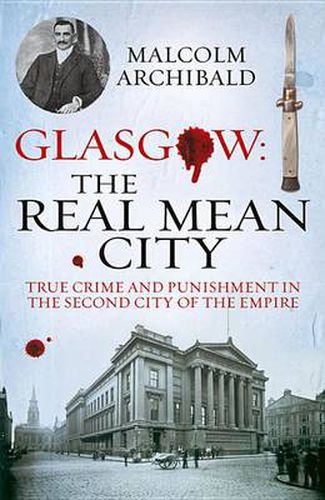Readings Newsletter
Become a Readings Member to make your shopping experience even easier.
Sign in or sign up for free!
You’re not far away from qualifying for FREE standard shipping within Australia
You’ve qualified for FREE standard shipping within Australia
The cart is loading…






There cannot be many cities where crime could mean anything from stealing a ship to singing a seditious song, but nineteenth-century Glasgow was a unique place with an amazing dynamism. Immigrants poured in from Ireland and the Highlands while the factories, shipyards and mills buzzed with innovation. However, underneath the bustle was a different world as an incredibly diverse criminal class worked for their own profit with total disregard for the law. Robbers infested the highways and byways, a glut of garrotters gathered to jump on the unwary, drunken brawls disfigured the evening streets, prostitutes lured foolish men into dark corners, conmen connived clever schemes and perfidious poisoners plotted. There were dark and dangerous places such as the Tontine Close and always the possibility of a major riot - with religion the excuse - as a volatile population became angry at unjust poverty and poor housing. It was perhaps not surprising that Glasgow formed Britain’s first professional police force and men such as Superintendent James Smart fought to stem the crime that at times seemed to overwhelm the city.The forces of law had to be mobile, with the robbery of the Paisley Bank involving a coach chase as far as London, while the robbery of Walter Baird’s shop in the Argyll Arcade took Acting Superintendent George McKay over the sea to Belfast. The police had an often thankless task and The Real Mean City chronicles the century-long struggle of the forces of law and order to bring peace to a troubled city.
$9.00 standard shipping within Australia
FREE standard shipping within Australia for orders over $100.00
Express & International shipping calculated at checkout
There cannot be many cities where crime could mean anything from stealing a ship to singing a seditious song, but nineteenth-century Glasgow was a unique place with an amazing dynamism. Immigrants poured in from Ireland and the Highlands while the factories, shipyards and mills buzzed with innovation. However, underneath the bustle was a different world as an incredibly diverse criminal class worked for their own profit with total disregard for the law. Robbers infested the highways and byways, a glut of garrotters gathered to jump on the unwary, drunken brawls disfigured the evening streets, prostitutes lured foolish men into dark corners, conmen connived clever schemes and perfidious poisoners plotted. There were dark and dangerous places such as the Tontine Close and always the possibility of a major riot - with religion the excuse - as a volatile population became angry at unjust poverty and poor housing. It was perhaps not surprising that Glasgow formed Britain’s first professional police force and men such as Superintendent James Smart fought to stem the crime that at times seemed to overwhelm the city.The forces of law had to be mobile, with the robbery of the Paisley Bank involving a coach chase as far as London, while the robbery of Walter Baird’s shop in the Argyll Arcade took Acting Superintendent George McKay over the sea to Belfast. The police had an often thankless task and The Real Mean City chronicles the century-long struggle of the forces of law and order to bring peace to a troubled city.